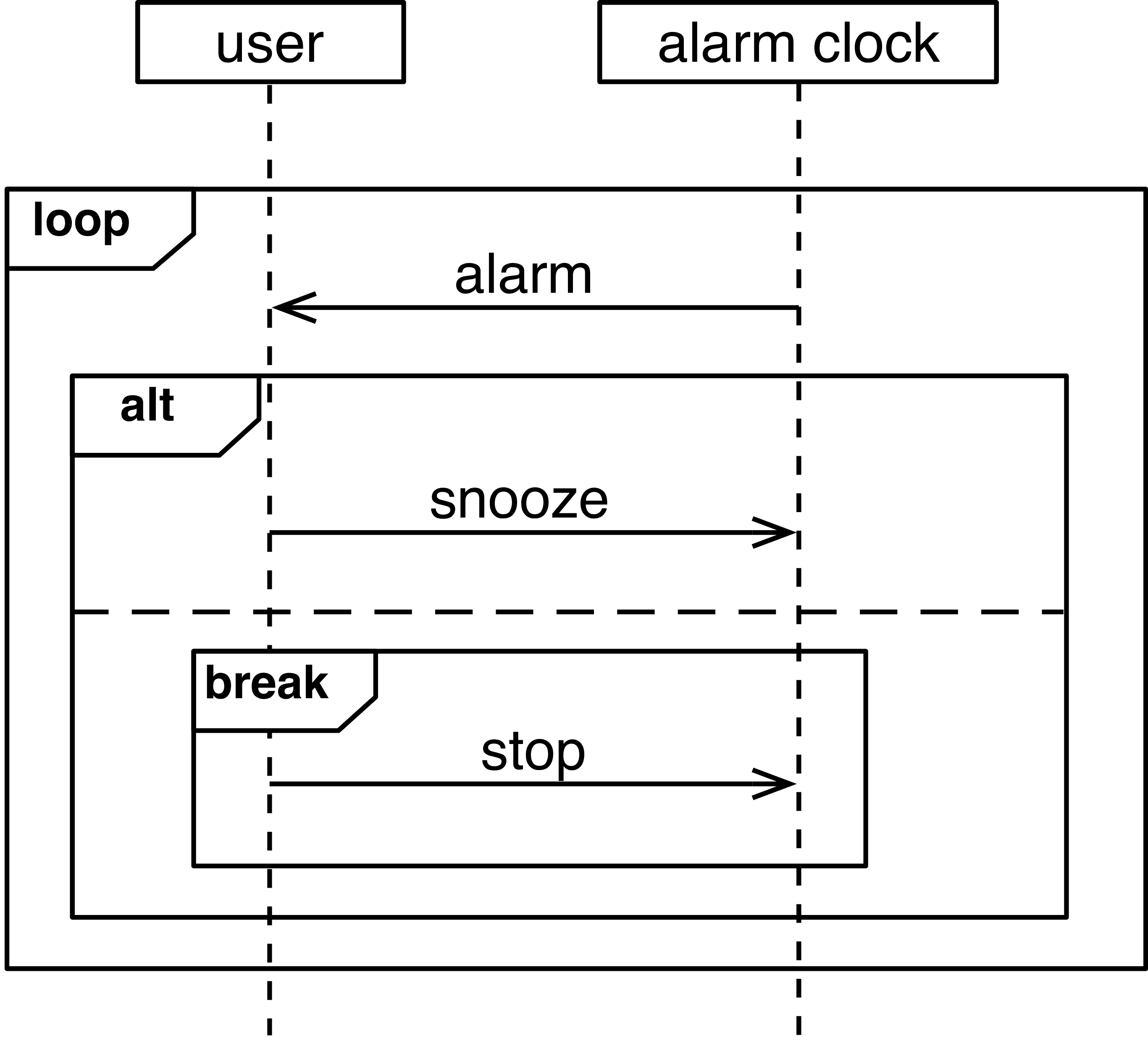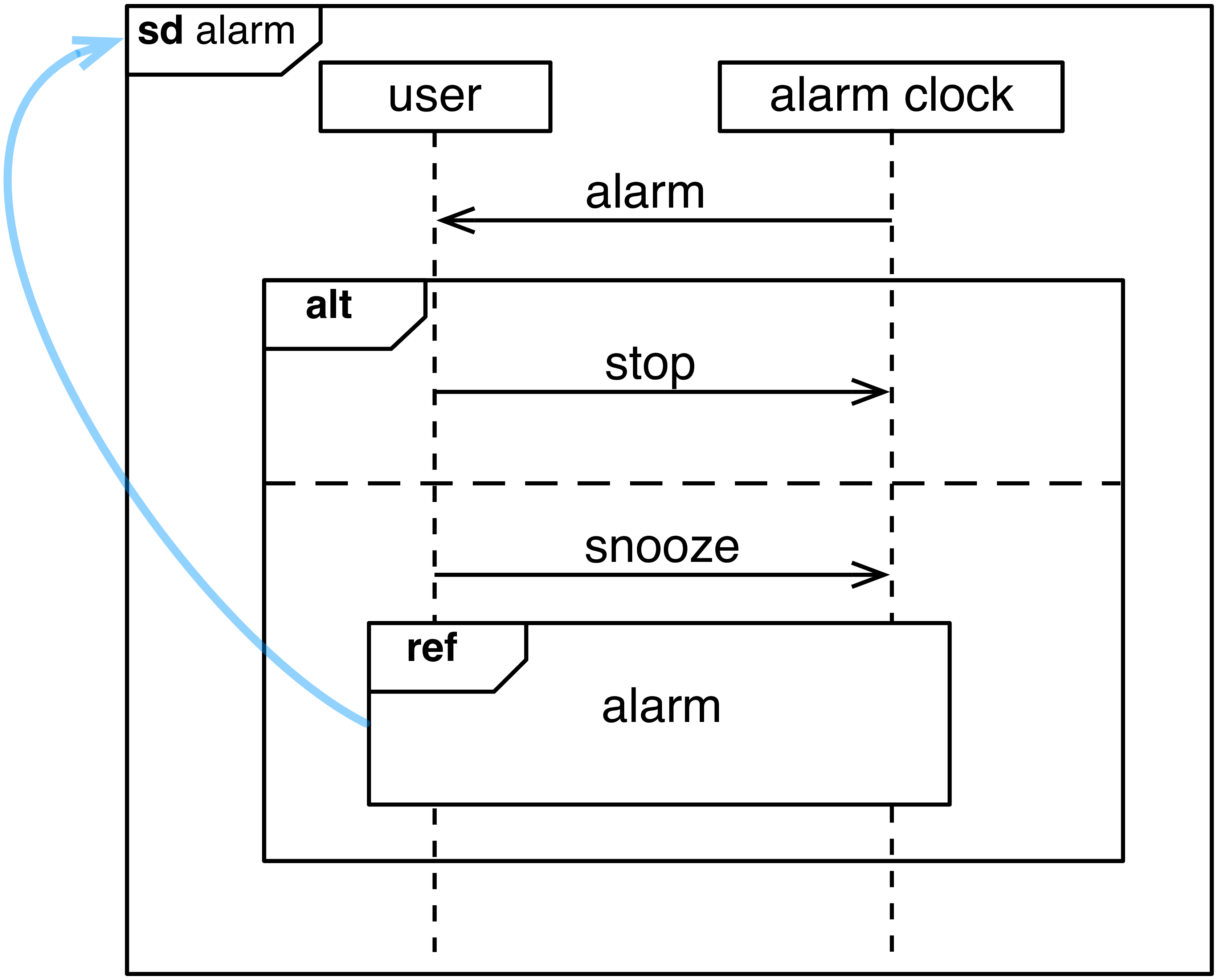Combined Fragments
Combined fragments allow you to express more behavioral details in compact ways. Some of them look very much like programming statements, which makes them intuitive to understand. However, it can also be a trap to think of them too much as control statements, since they do not handle operations, but entire scenarios. Rather, think of them as a way to characterize interactions.
alt
The alt fragment specifies alternative scenarios. For instance, a component may ask for access, and the access right may be granted or not. We can show this in the sequence diagram Access below:

The different compartments are alternatives to each other. There may be any number of compartments, not only two. They are separated by a dashed line. To describe in more detail, when a specific alternative is chosen, the compartments can have an optional guard. This guard may refer to some text or a variable.
Access almost looks like an if-statement. And in fact, the access control component may internally execute an if-statement. But the alt fragment can be even more abstract, since it can describe alternative scenarios, independent of how they are realized. The specification of Timer is therefore equally valid Do you see the difference? The example shows that a timer can be started and then either be aborted or it times out. This time the scenario is more subtle, the alternative is not determined by a single component, but the overall timing of the interaction.
opt
The opt fragment contains behavior that can happen or not. It is similar to an alt fragment with two compartments, one of which is empty. Like with the alt fragment, the opt fragment can have a guard.

loop
With the loop fragment, you can express that a behavior is executed repeatedly. Below, you see the specification of an alarm clock with a snooze function. Within the loop fragment, you see an alt fragment, with different branches of the user either snoozing or stopping the alarm. In case of stopping the alarm, there is also a break fragment. This signals the escape out of the loop. You may also leave unspecified how often the loop is executed.

assert and neg
In some cases, you want to assert that a certain interaction must exactly occur as specified. For that, you can place it into an assert fragment. The other way round, you may want to specify negative behavior, i.e., behavior that must not happen. Such behavior can be places in a neg fragment.

ref
With a ref fragment, you can refer from one sequence diagram to another one. This makes diagrams easier to handle. It also allows to reuse a sequence diagram and apply it at several places.
In the example below, we have another definition of the snooze feature of an alarm clock. Here, we used the ref fragment that refers to the sequence diagram itself and by that introduces some recursion. (The blue arrow is just an illustration.) This is probably not a good example in general, but it should work. Note that the outermost frame, labeled "sd alarm" encapsulates the entire sequence diagram.

Time Constraints
In some cases, you want to add time constraints to a specification, to show when an interaction occurs, or how long specific parts of it may or should take. Have a look at the example below:

It shows that the newsletter is sent at 12:00. Five time units later, the student receives the confirmation. The diagram also specifies that the signal inform must be received within two hours.